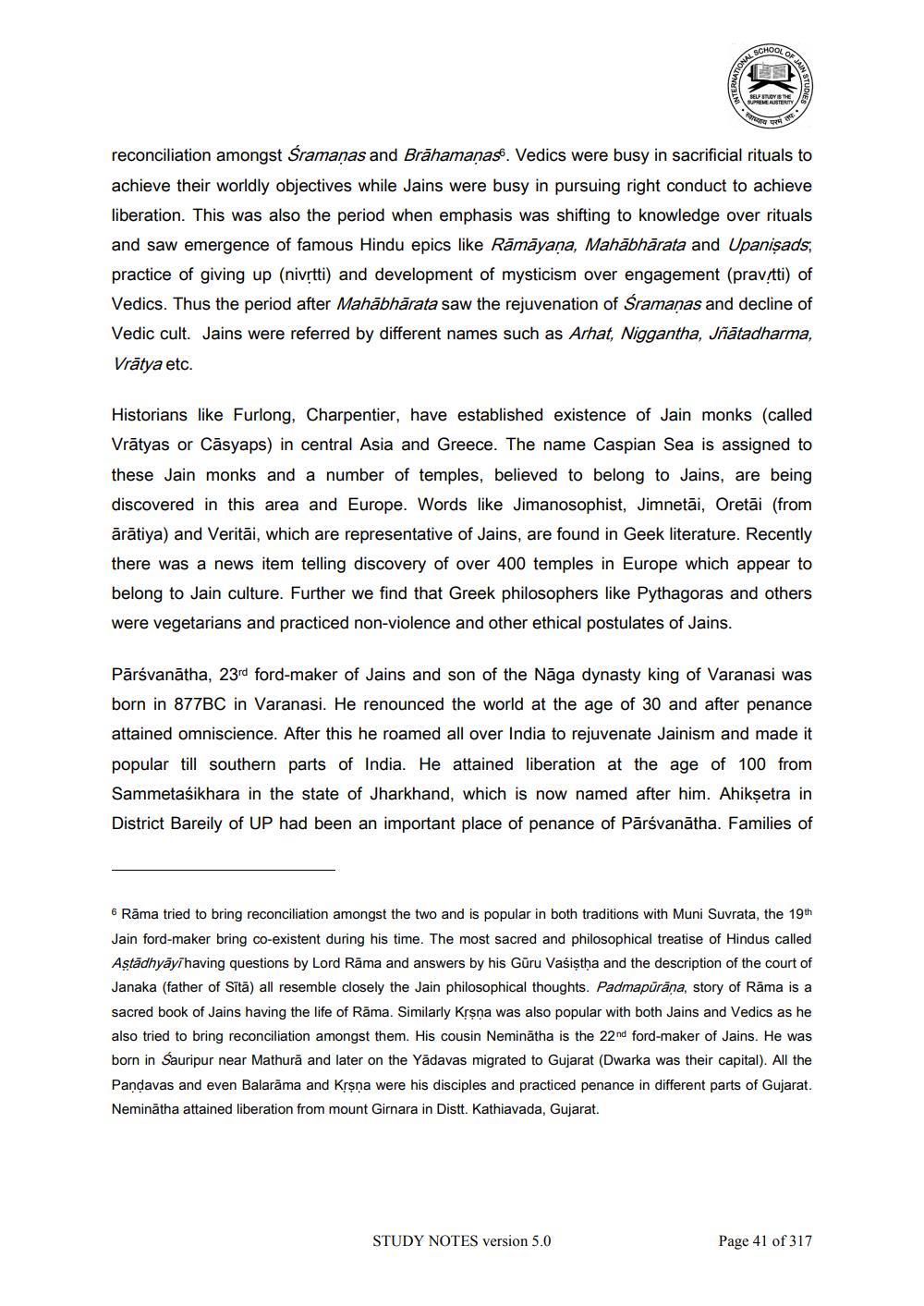________________
SCHOOL
OF
SELF STUDY IS THE SUPREME AUSTERITY
स्वाध्याय
परमे
STUDIES
MES
reconciliation amongst Śramanas and Brahamanas. Vedics were busy in sacrificial rituals to achieve their worldly objectives while Jains were busy in pursuing right conduct to achieve liberation. This was also the period when emphasis was shifting to knowledge over rituals and saw emergence of famous Hindu epics like Rāmāyaṇa, Mahābhārata and Upanisads, practice of giving up (nivṛtti) and development of mysticism over engagement (prav/tti) of Vedics. Thus the period after Mahabharata saw the rejuvenation of Śramanas and decline of Vedic cult. Jains were referred by different names such as Arhat, Niggantha, Jñātadharma, Vratya etc.
STUDY NOTES version 5.0
Historians like Furlong, Charpentier, have established existence of Jain monks (called Vratyas or Casyaps) in central Asia and Greece. The name Caspian Sea is assigned to these Jain monks and a number of temples, believed to belong to Jains, are being discovered in this area and Europe. Words like Jimanosophist, Jimnetãi, Oretai (from ārātiya) and Veritai, which are representative of Jains, are found in Geek literature. Recently there was a news item telling discovery of over 400 temples in Europe which appear to belong to Jain culture. Further we find that Greek philosophers like Pythagoras and others were vegetarians and practiced non-violence and other ethical postulates of Jains.
Pārsvanatha, 23rd ford-maker of Jains and son of the Nāga dynasty king of Varanasi was born in 877BC in Varanasi. He renounced the world at the age of 30 and after penance attained omniscience. After this he roamed all over India to rejuvenate Jainism and made it popular till southern parts of India. He attained liberation at the age of 100 from Sammetaśikhara in the state of Jharkhand, which is now named after him. Ahikṣetra in District Bareily of UP had been an important place of penance of Pārsvanatha. Families of
6 Rāma tried to bring reconciliation amongst the two and is popular in both traditions with Muni Suvrata, the 19th Jain ford-maker bring co-existent during his time. The most sacred and philosophical treatise of Hindus called Astādhyāyihaving questions by Lord Rama and answers by his Guru Vasistha and the description of the court of Janaka (father of Sītā) all resemble closely the Jain philosophical thoughts. Padmapūrāna, story of Rāma is a sacred book of Jains having the life of Rāma. Similarly Kṛṣṇa was also popular with both Jains and Vedics as he also tried to bring reconciliation amongst them. His cousin Neminatha is the 22nd ford-maker of Jains. He was born in Sauripur near Mathura and later on the Yadavas migrated to Gujarat (Dwarka was their capital). All the Pandavas and even Balarama and Kṛṣṇa were his disciples and practiced penance in different parts of Gujarat. Neminatha attained liberation from mount Girnara in Distt. Kathiavada, Gujarat.
Page 41 of 317




